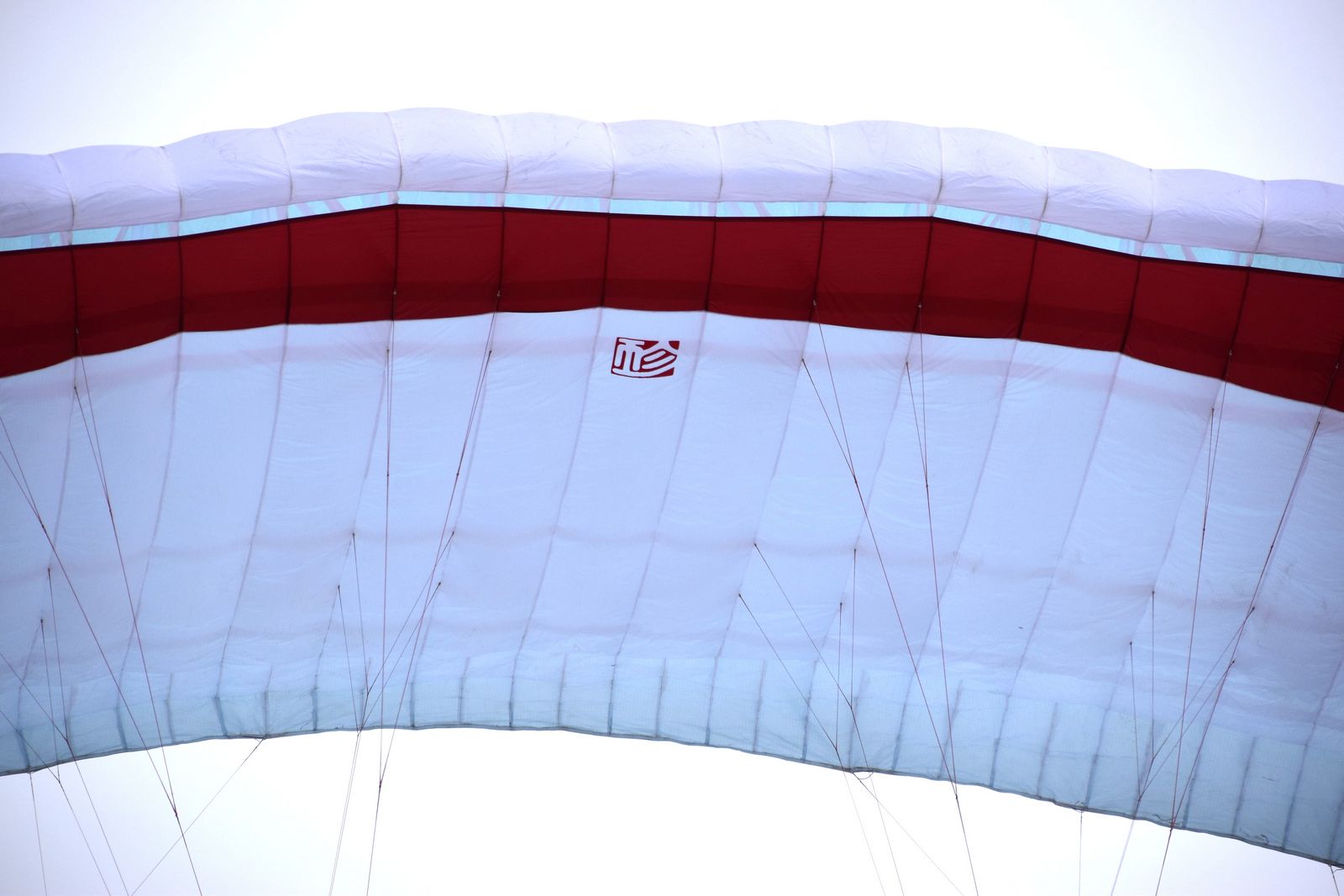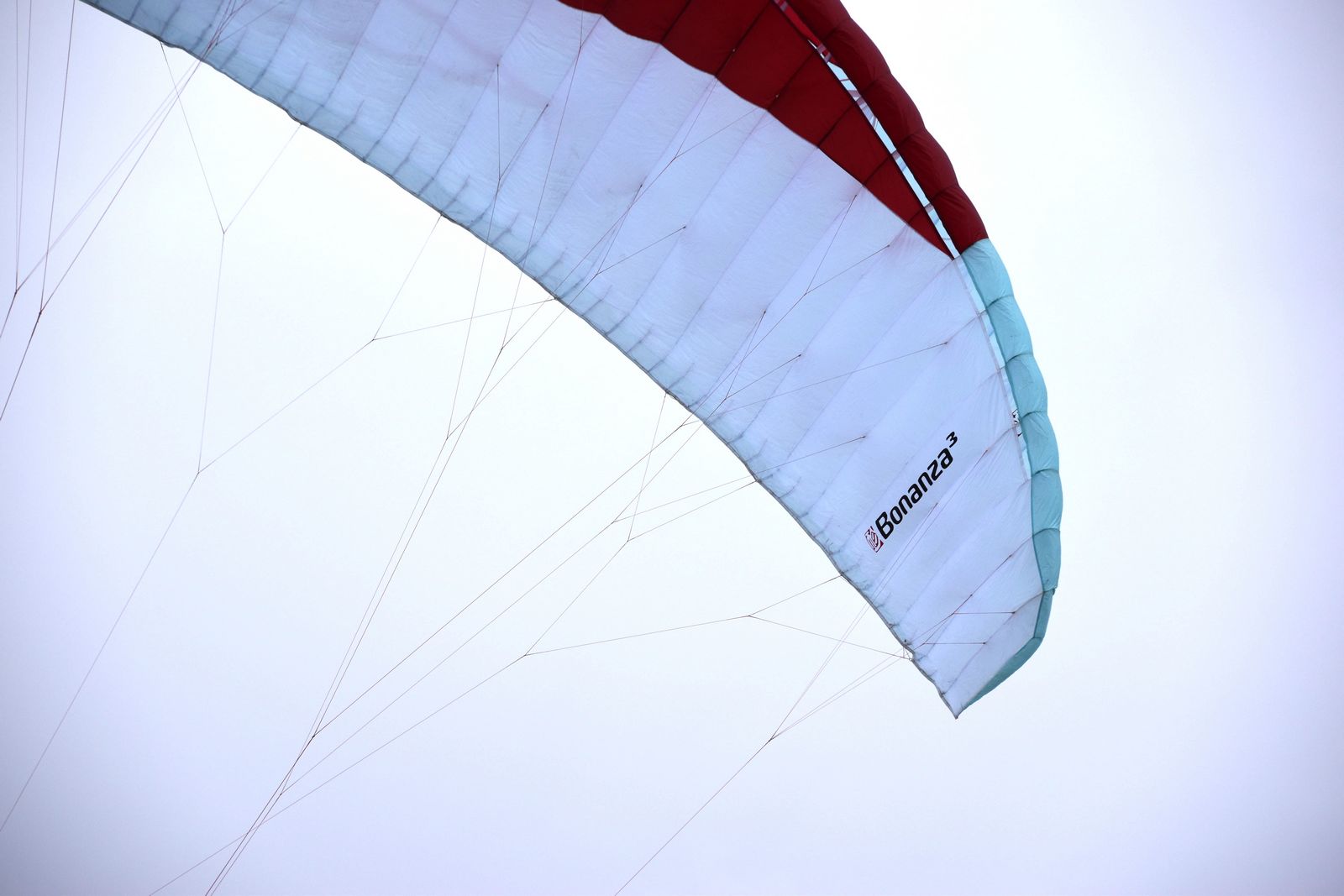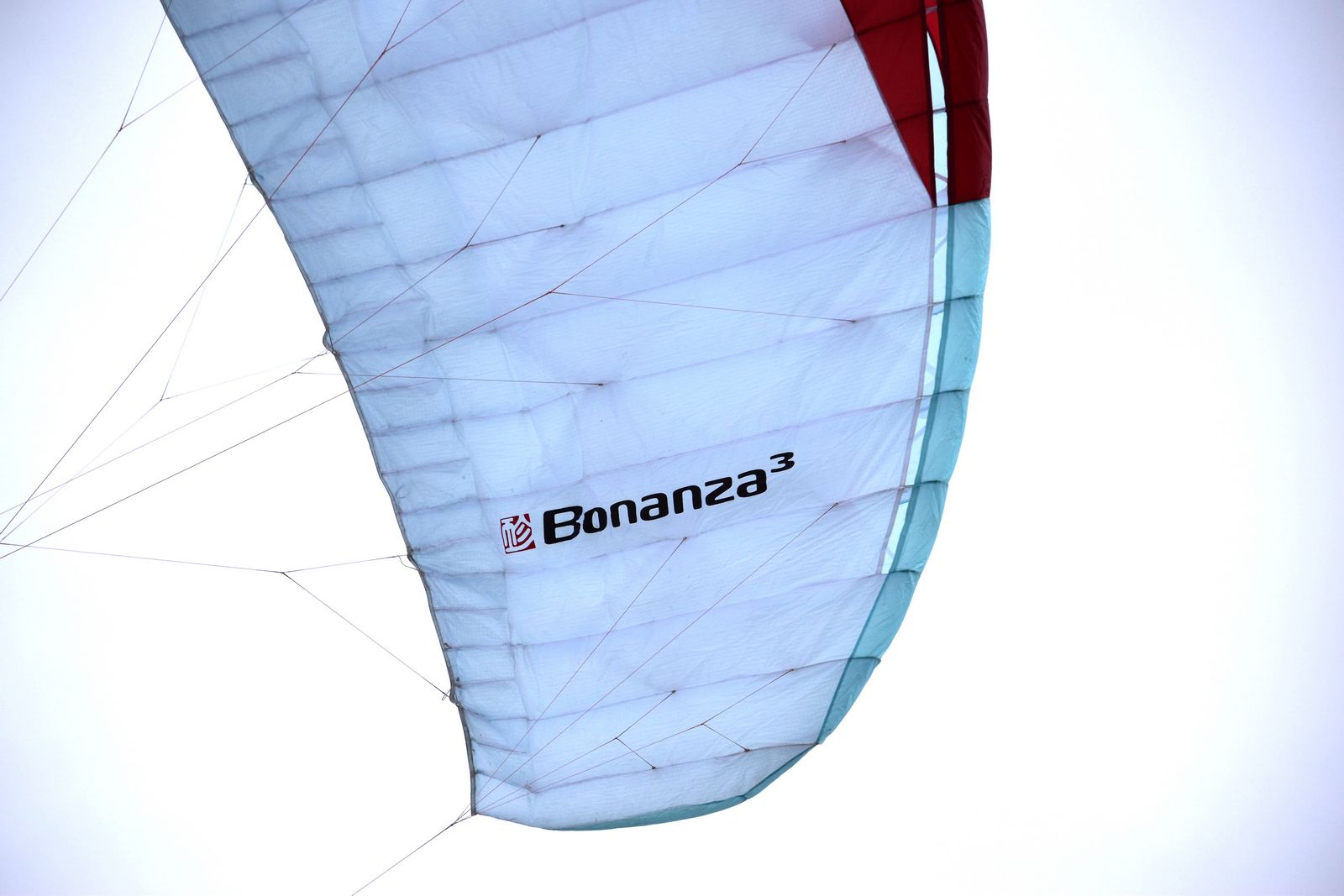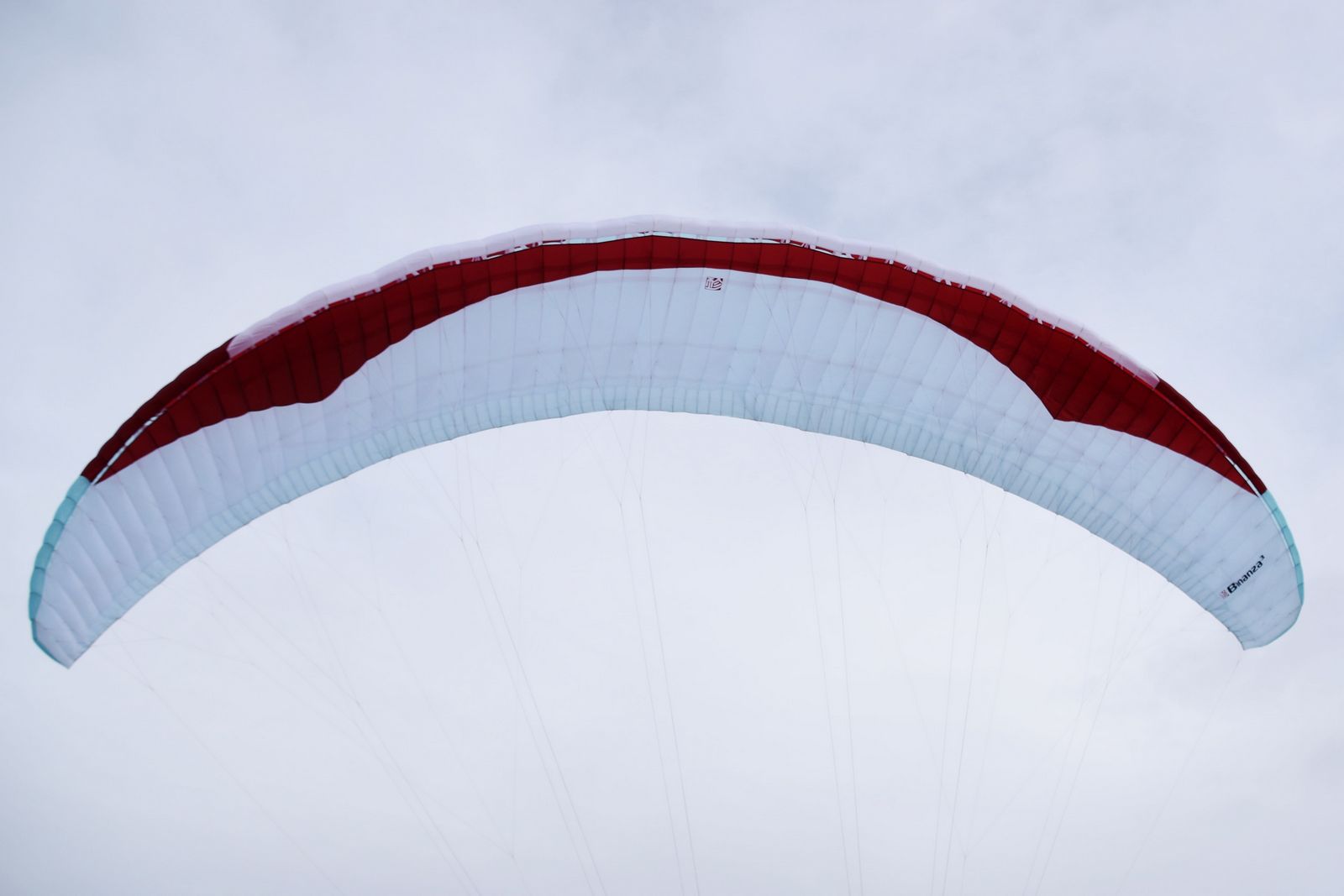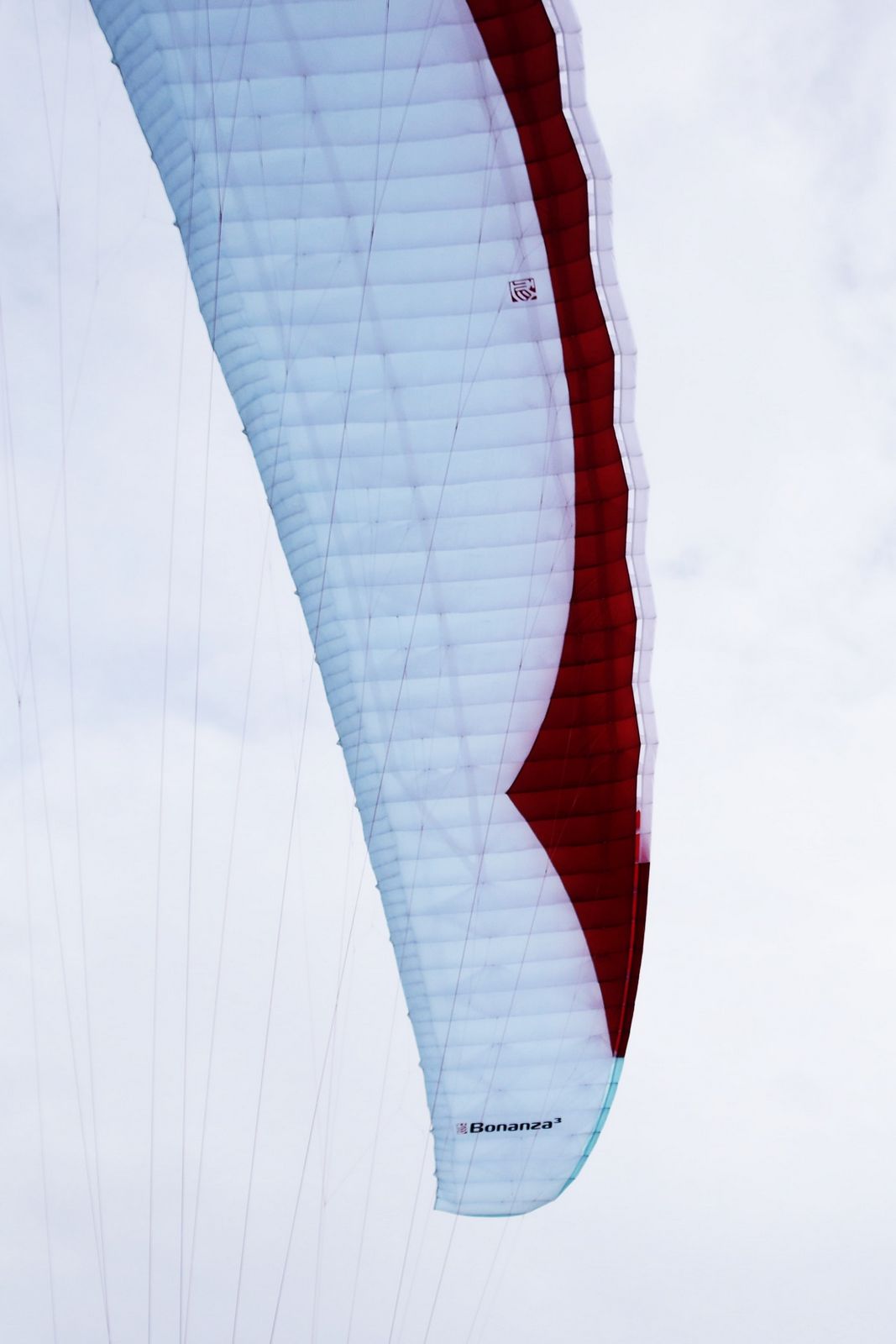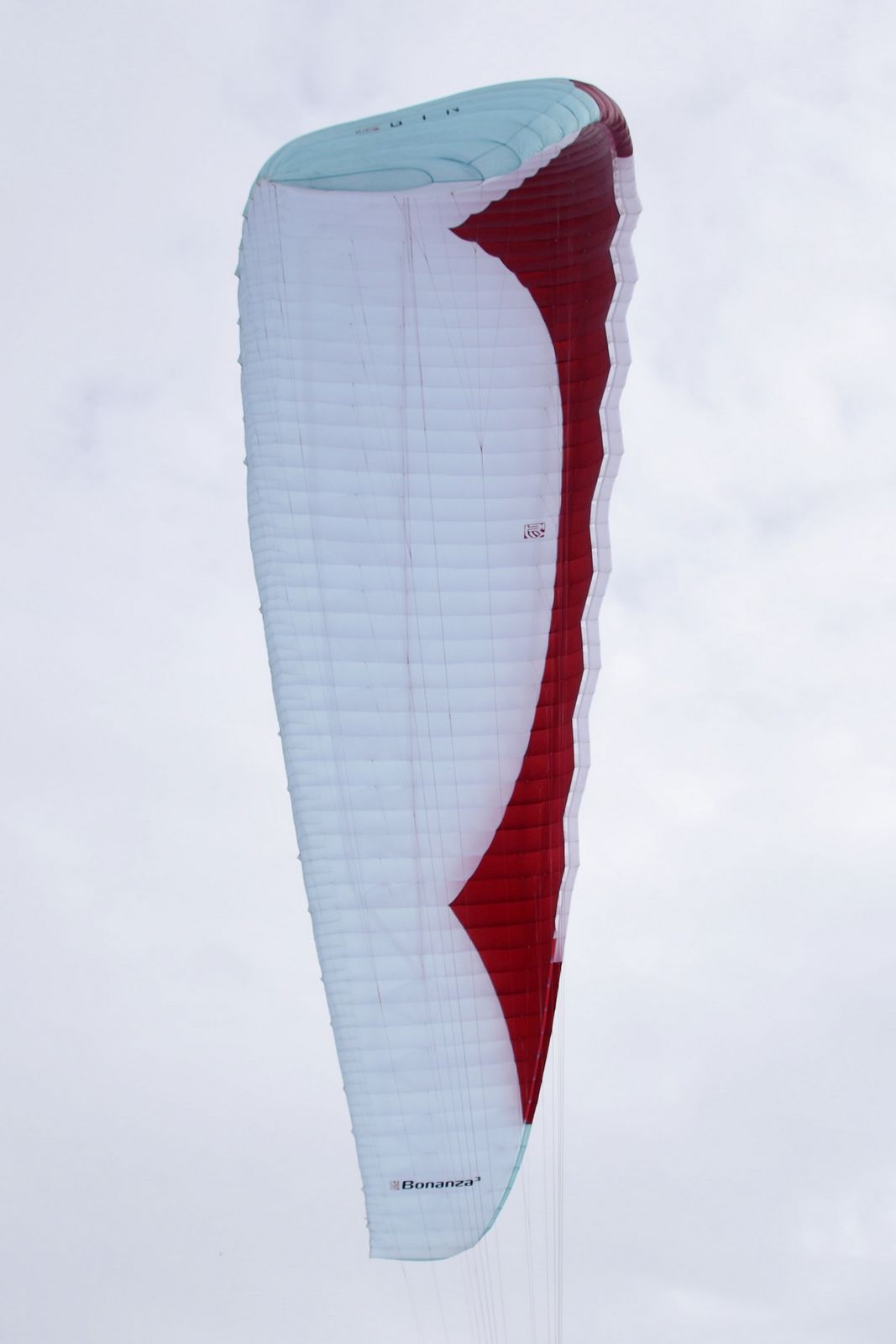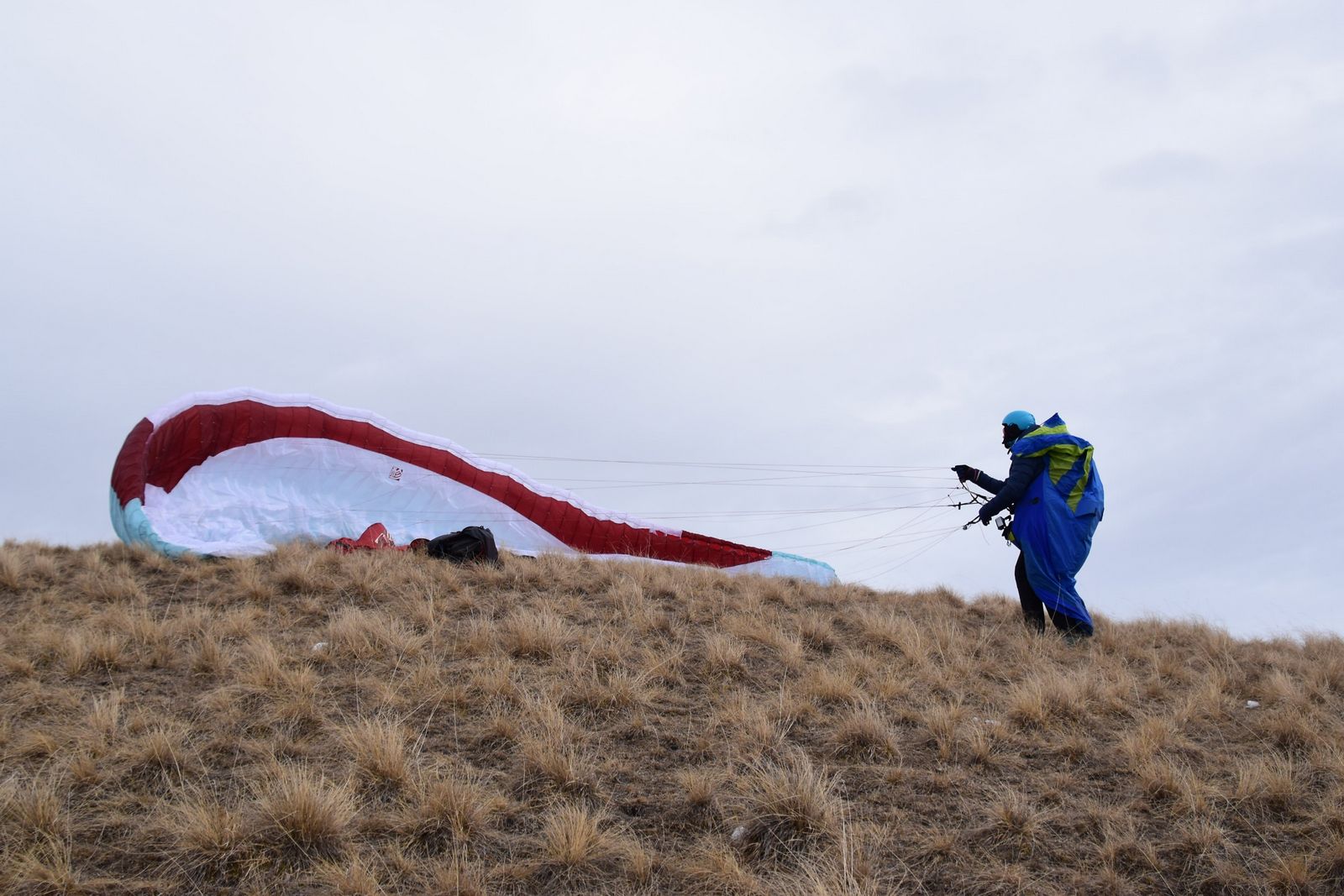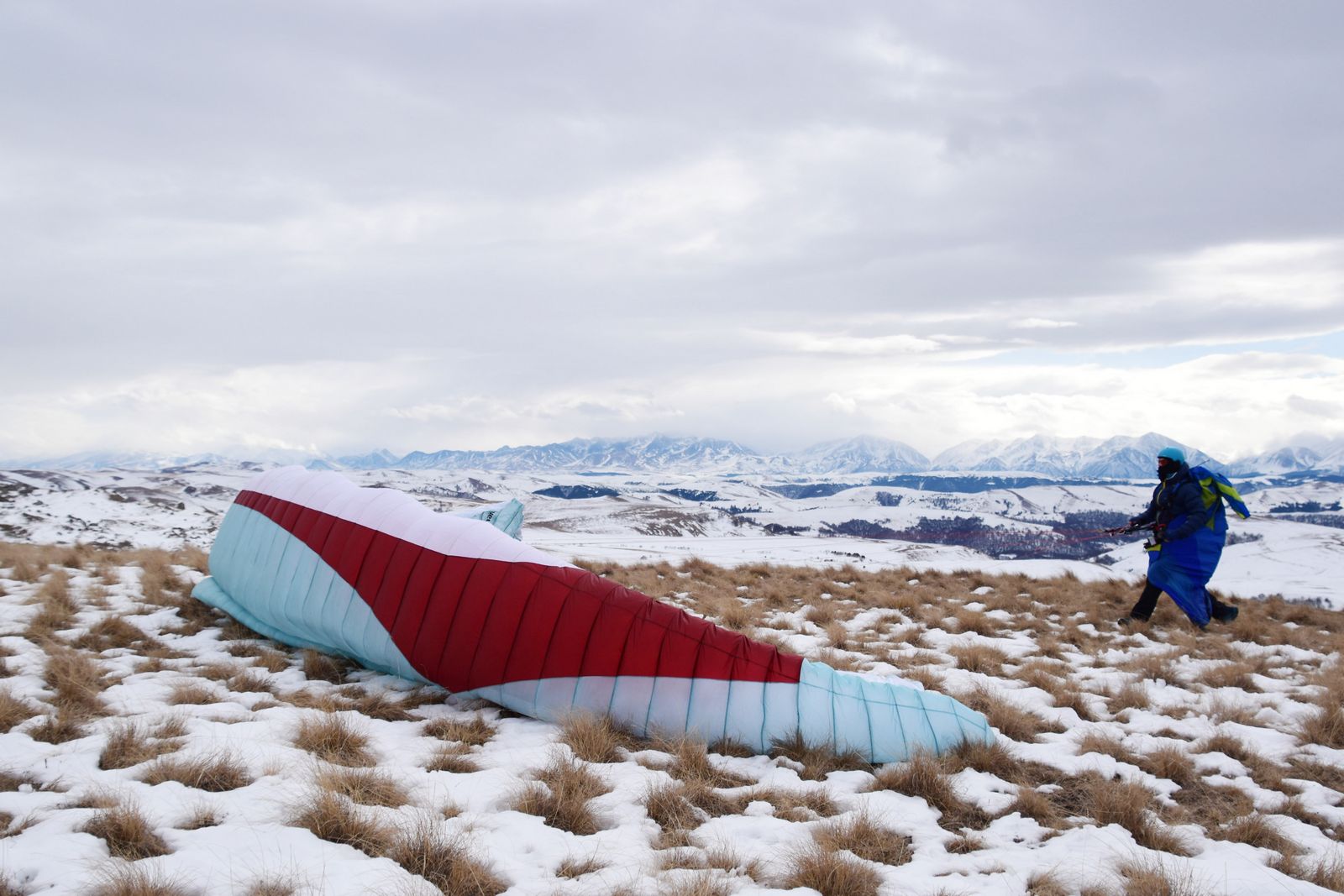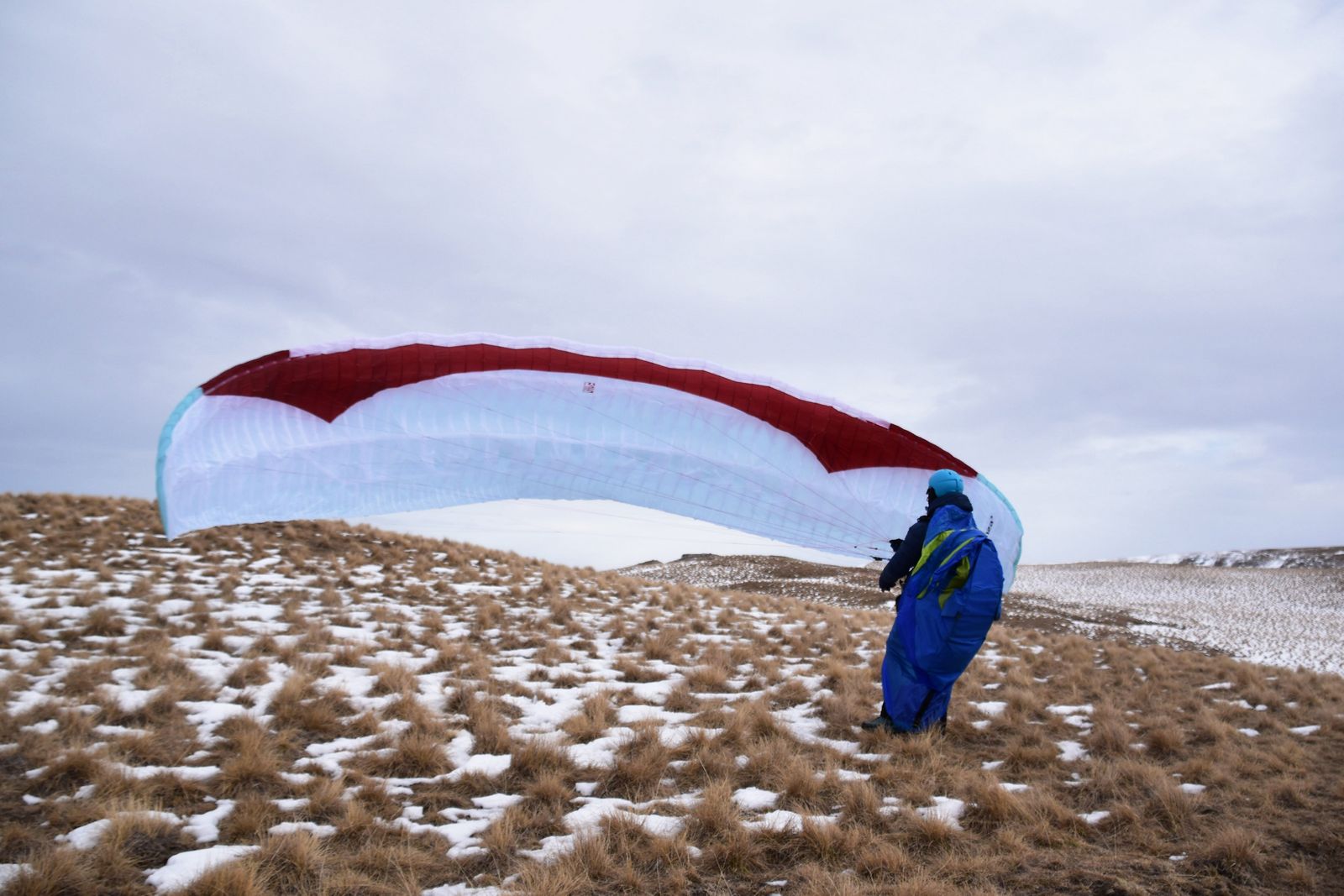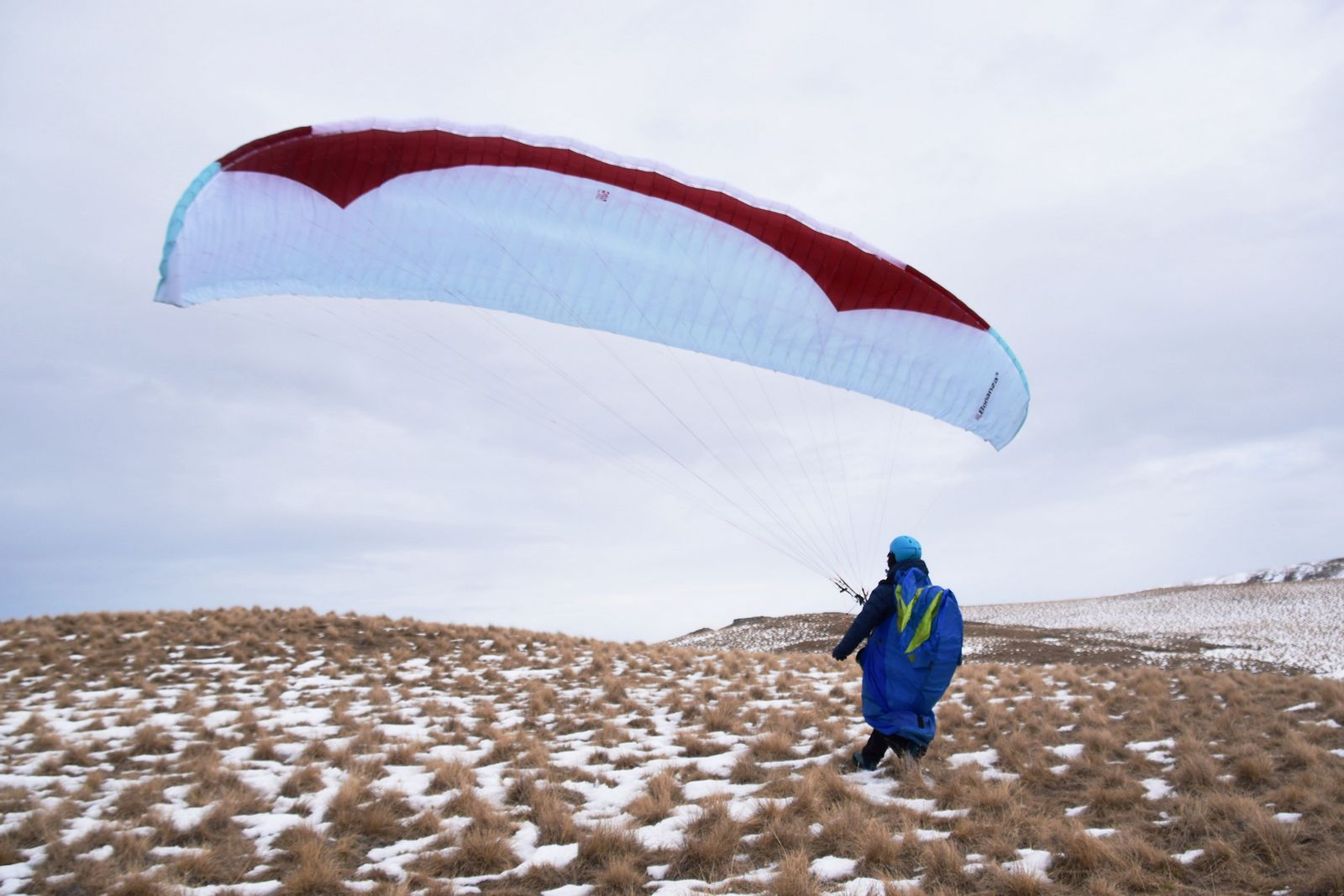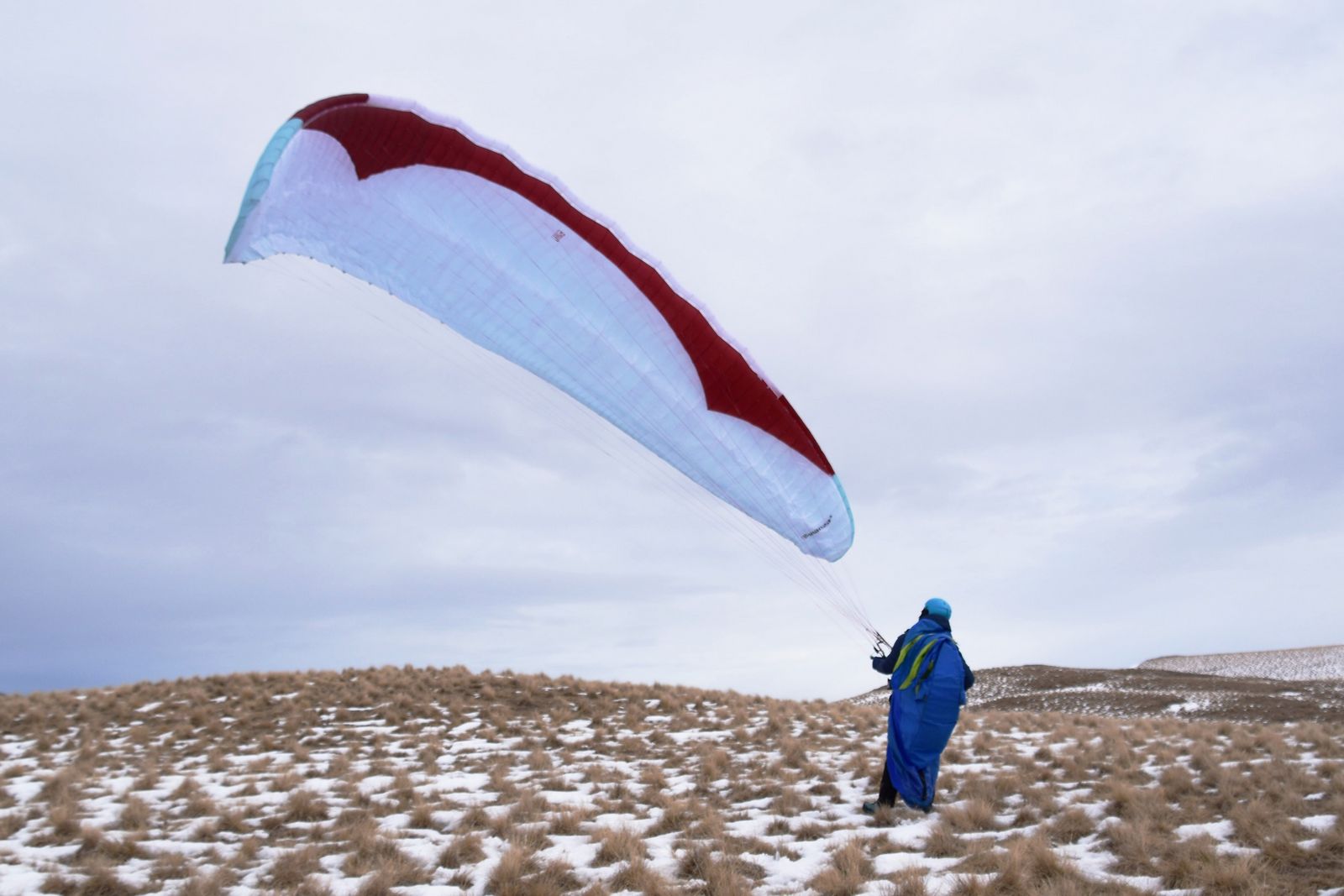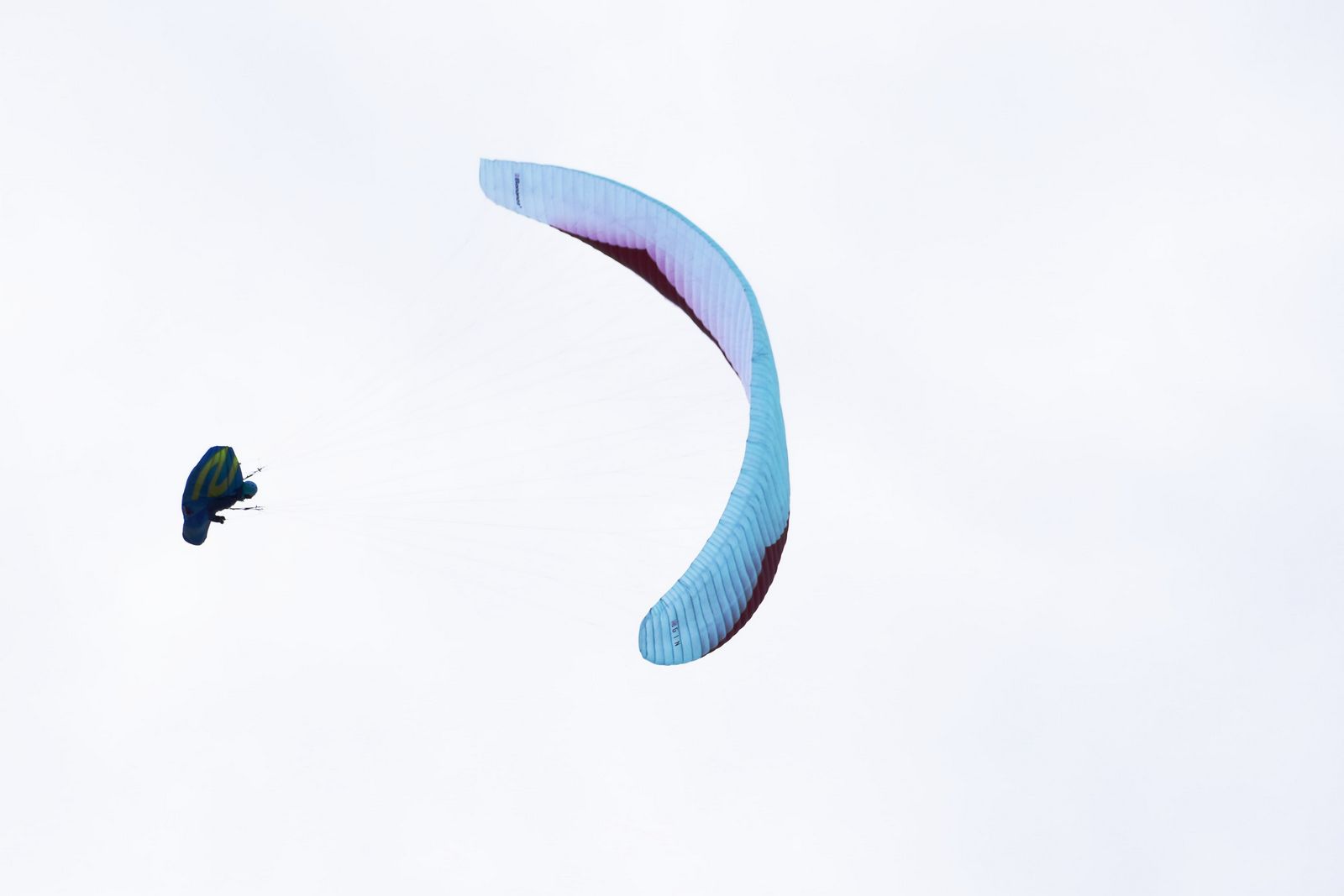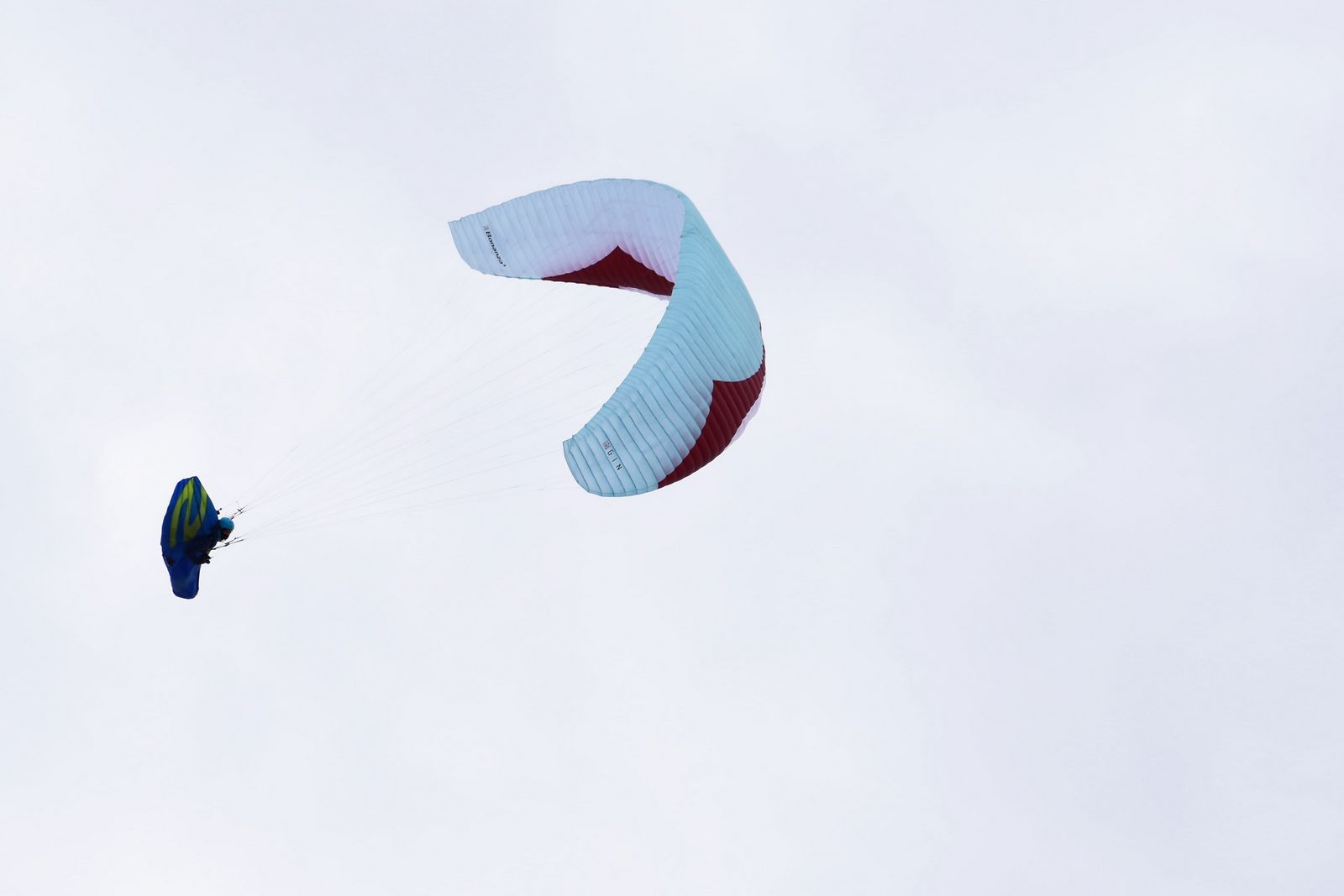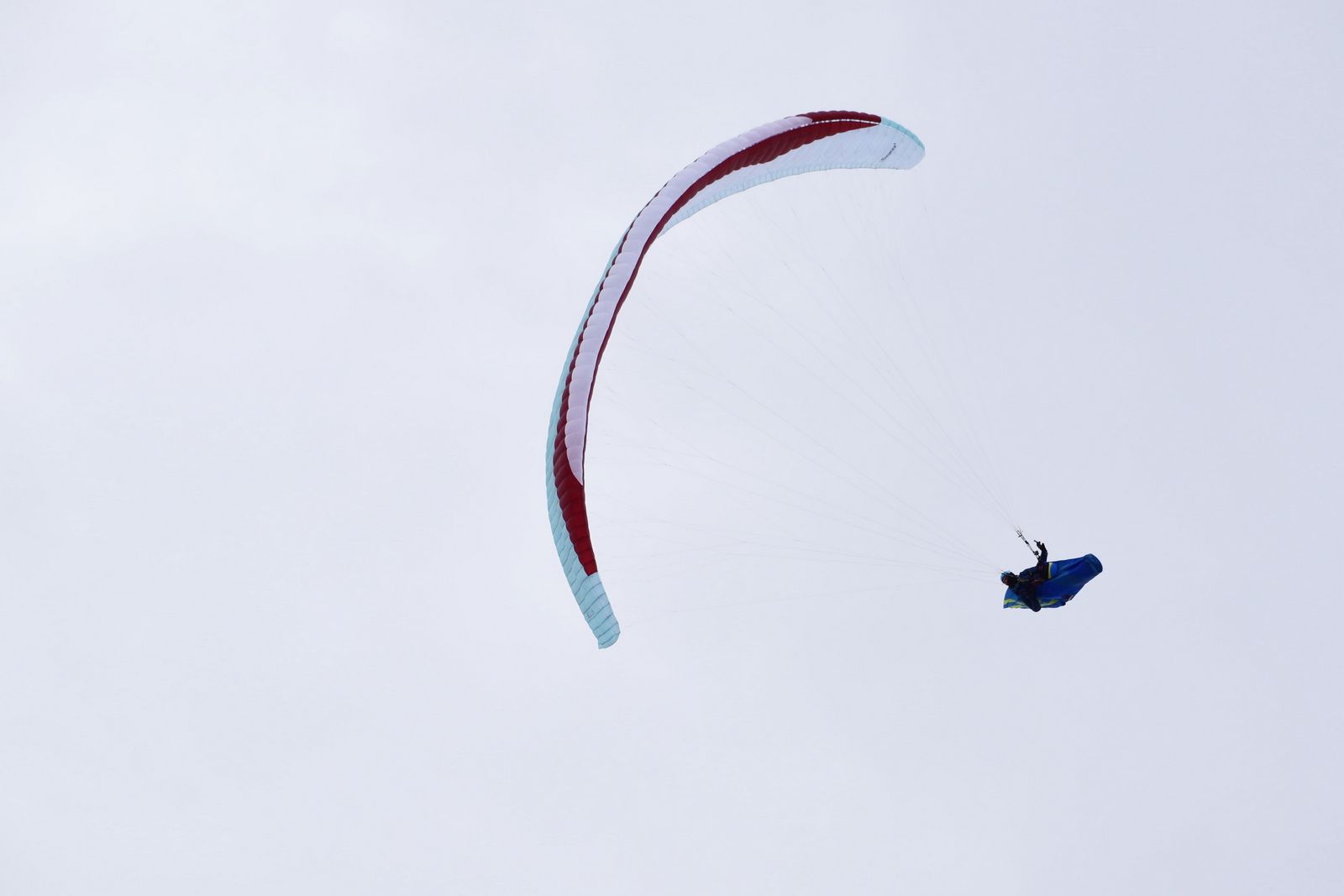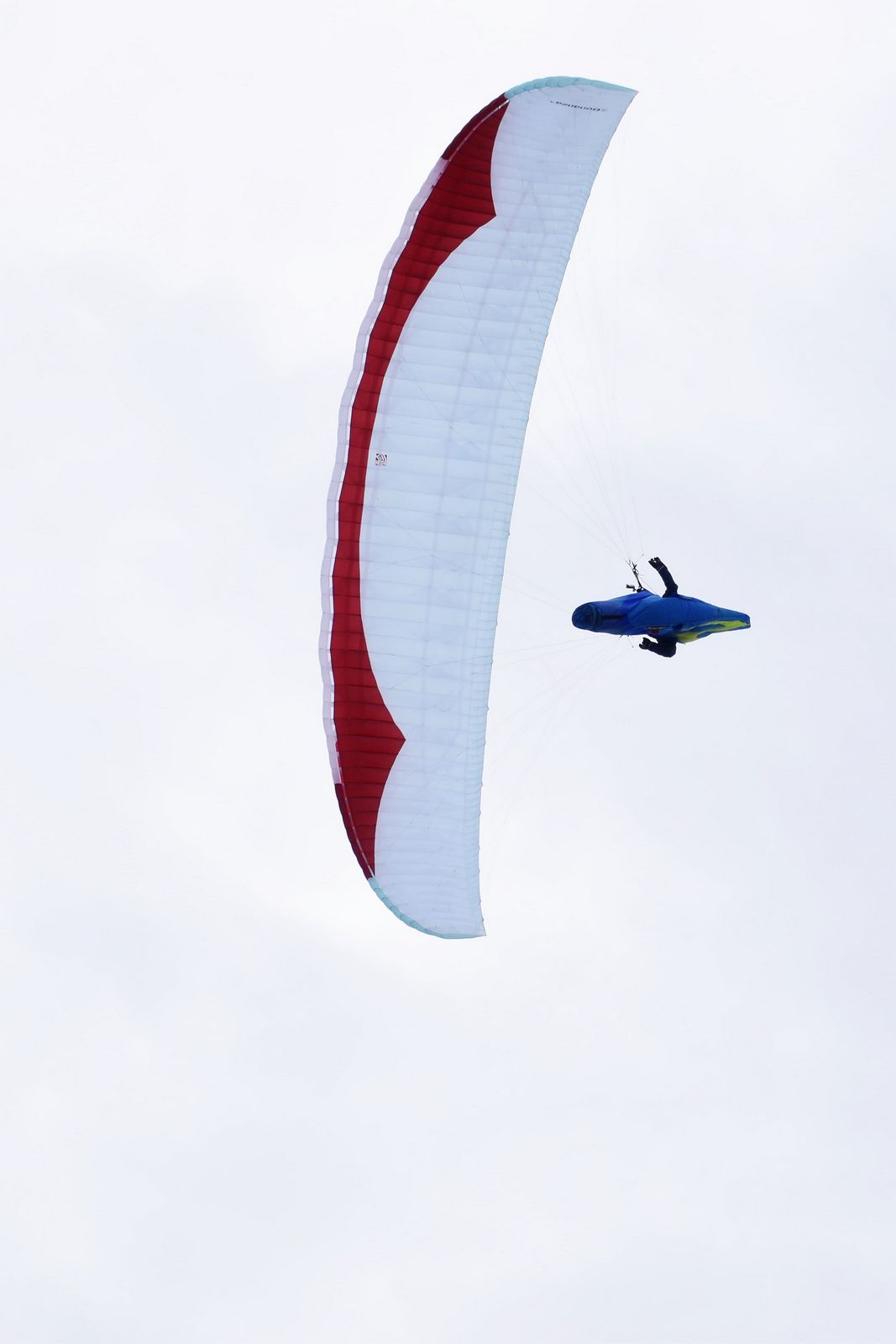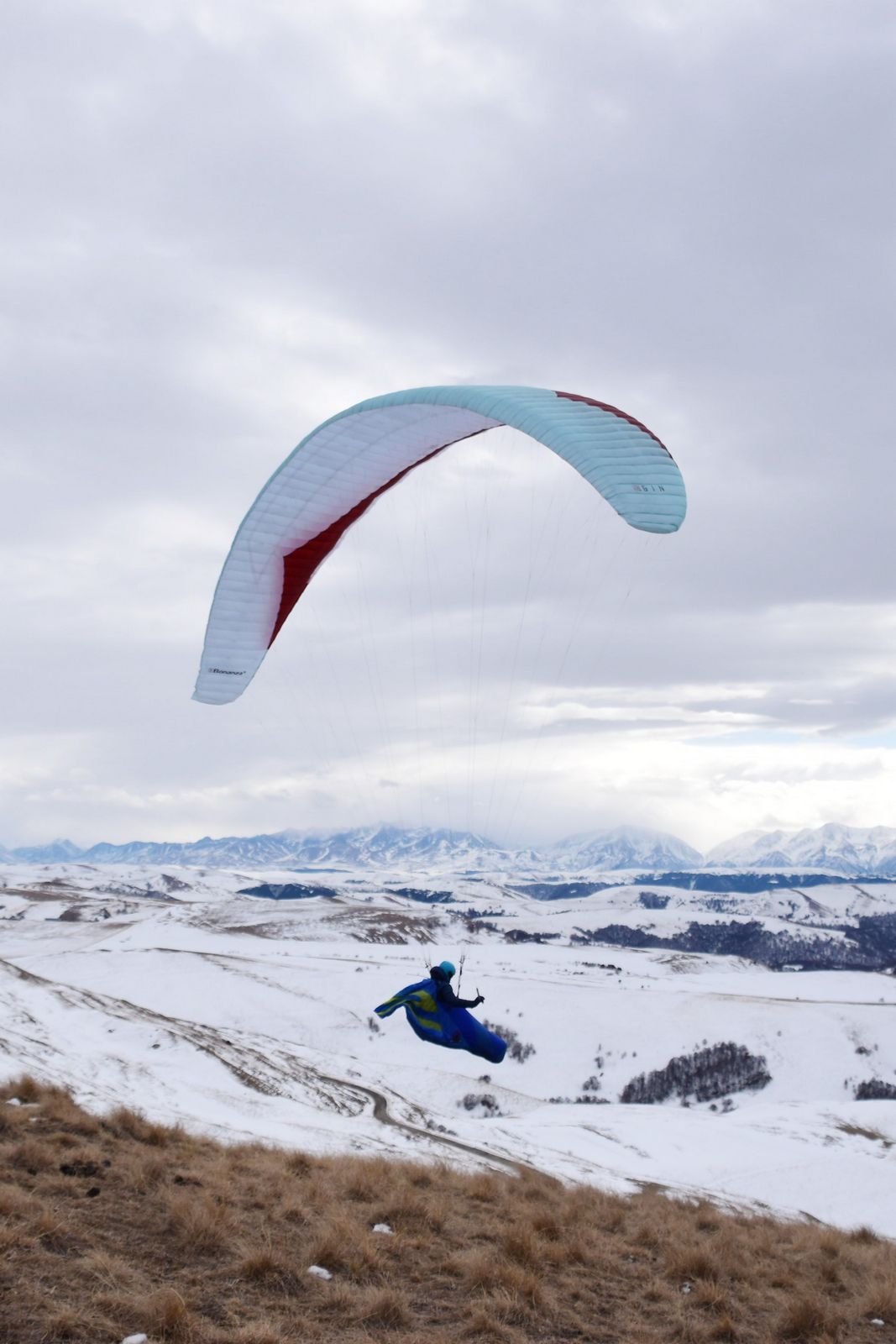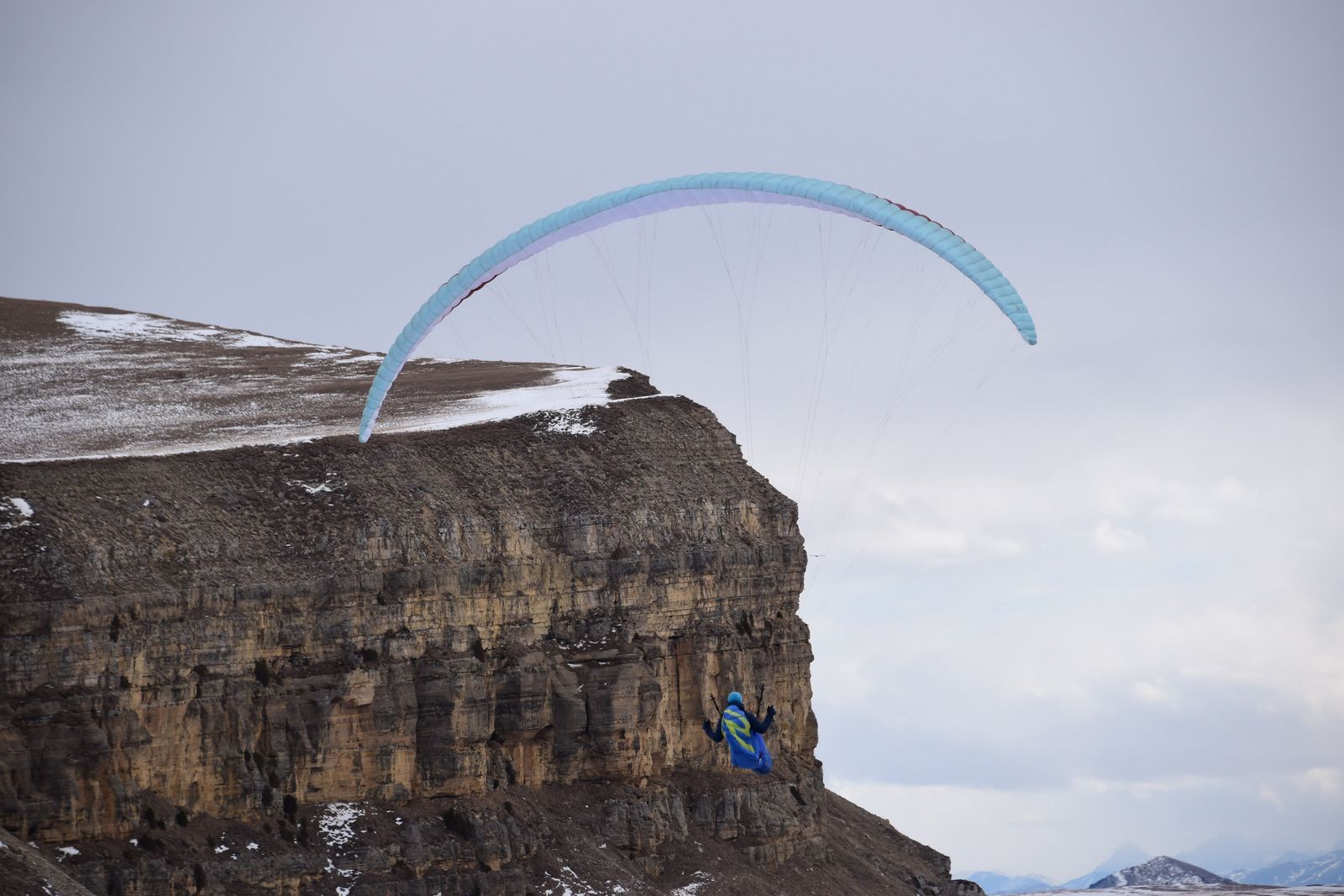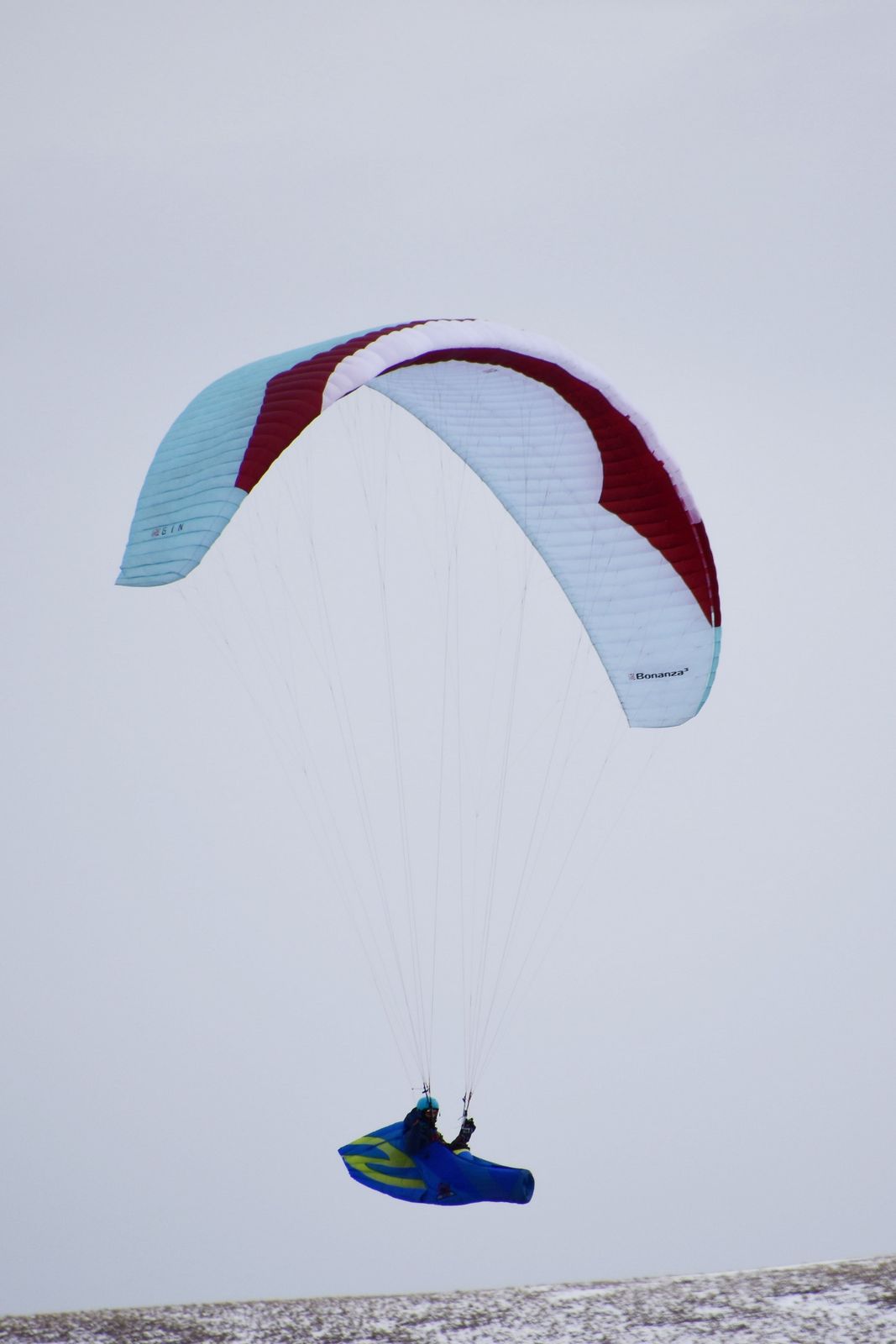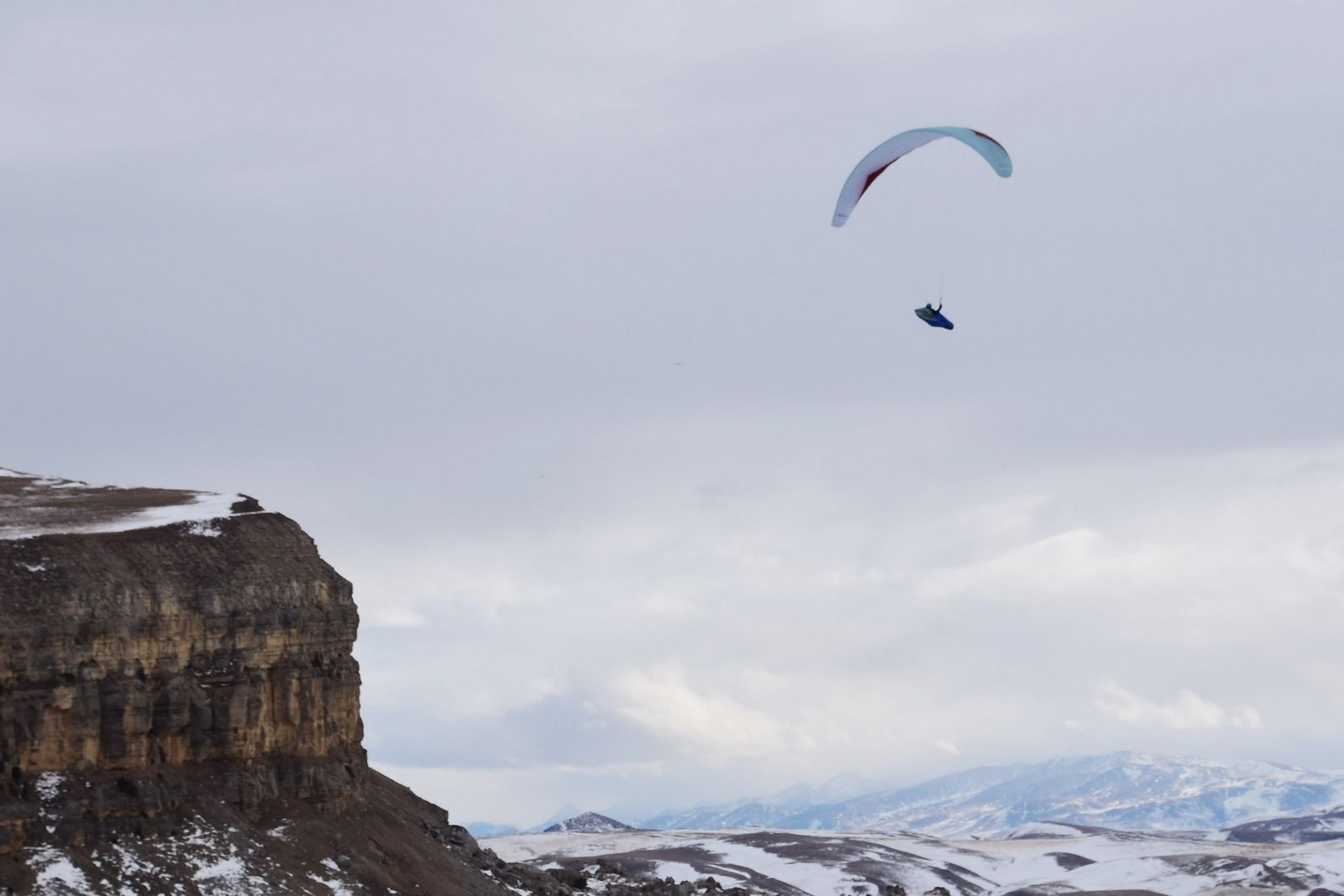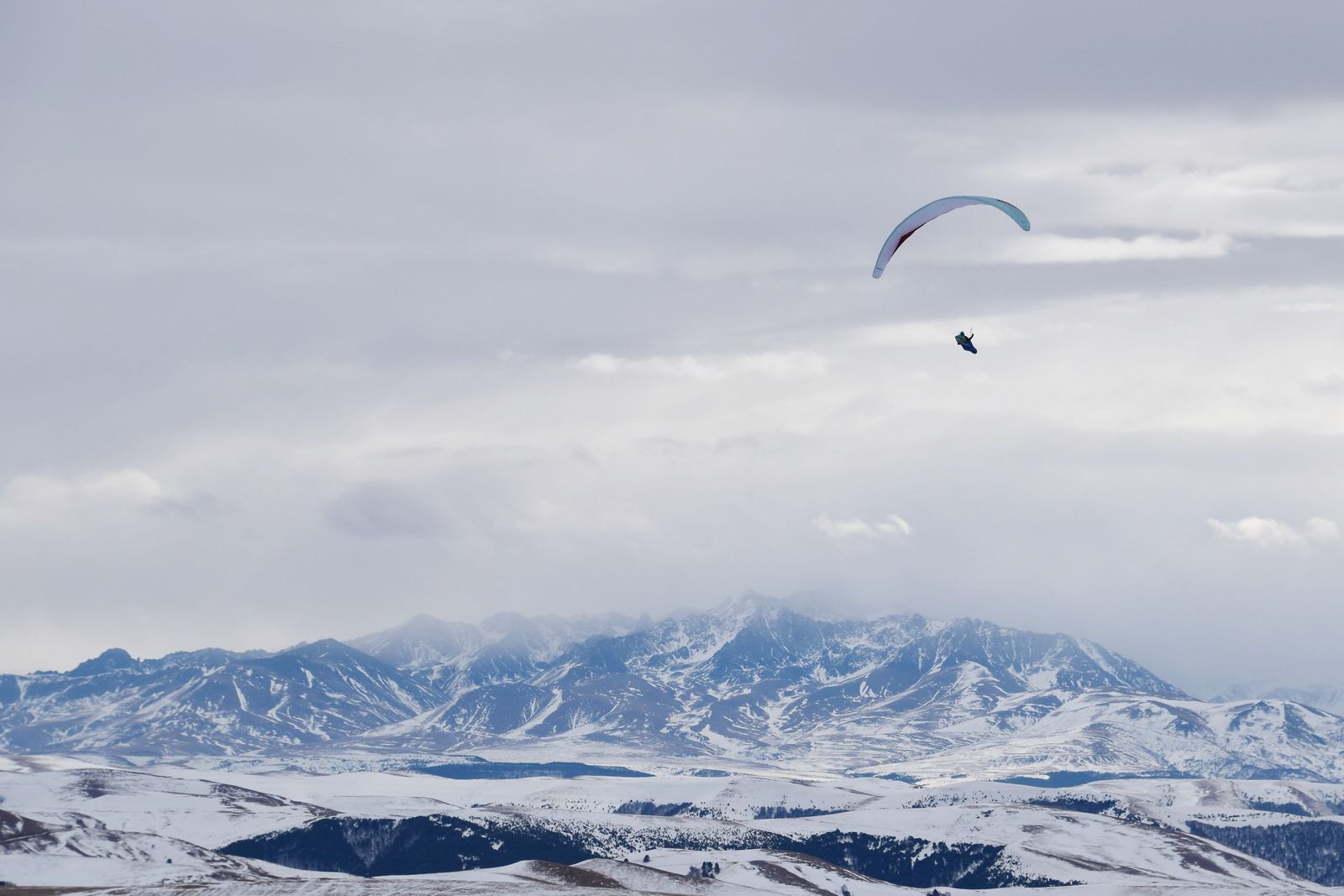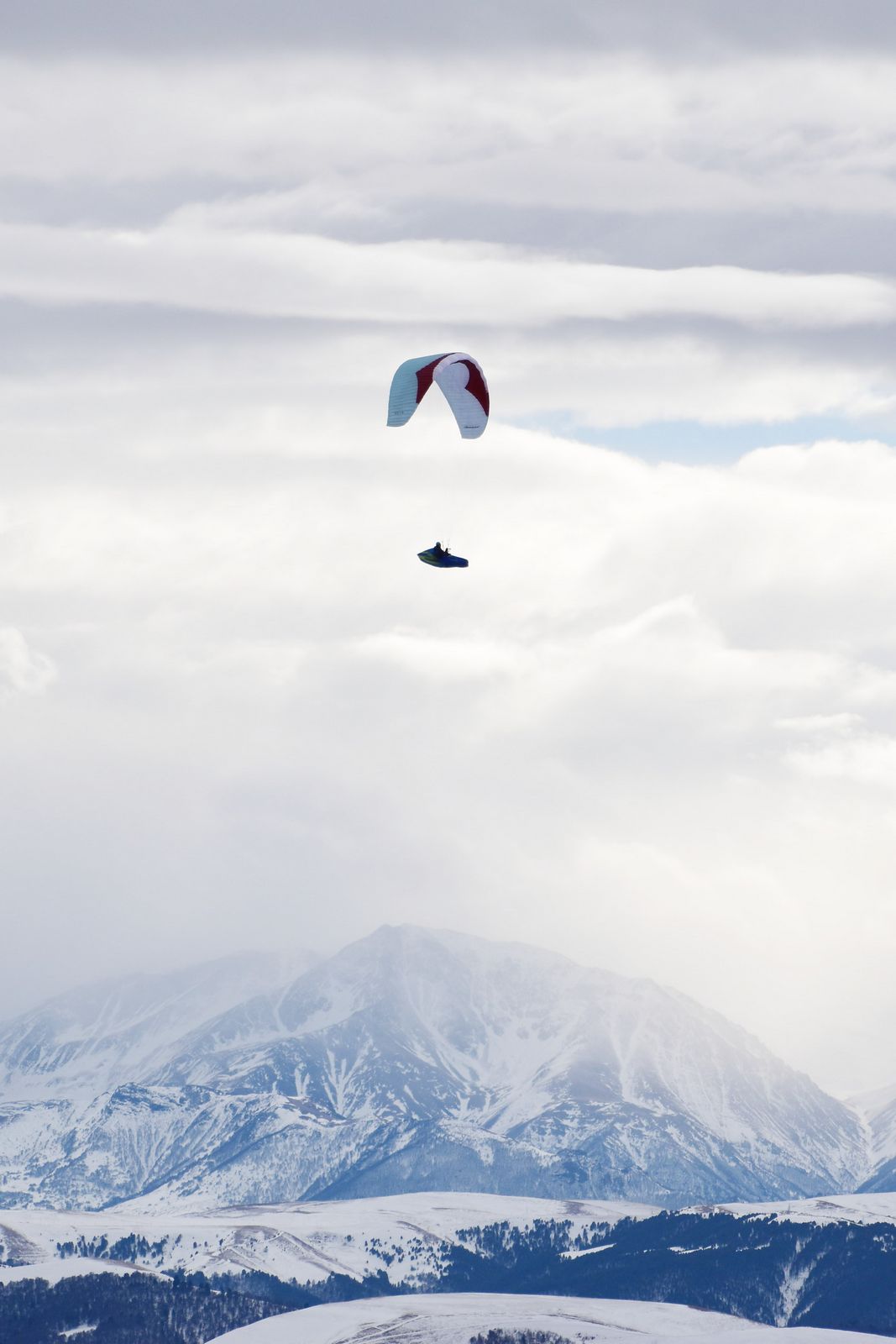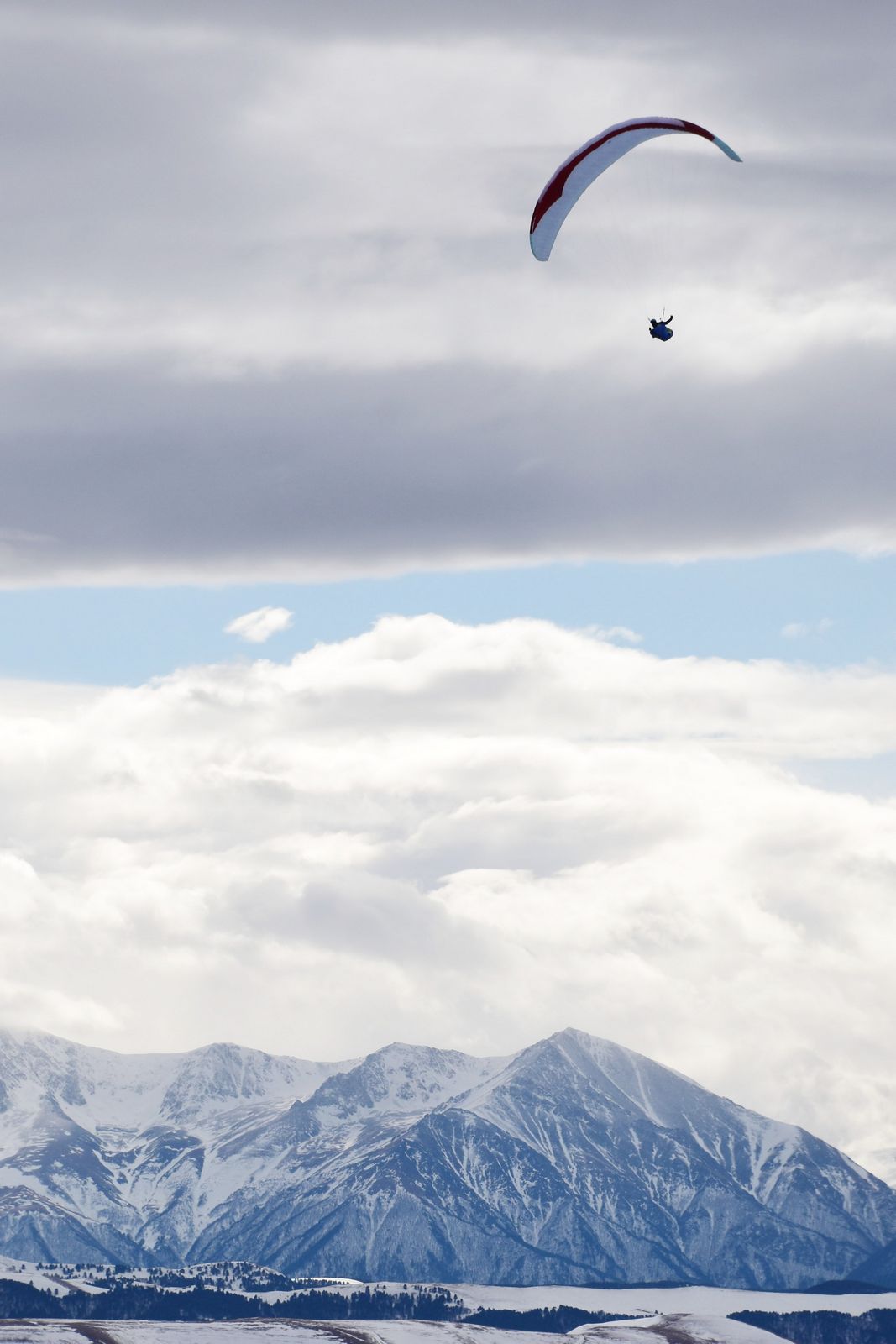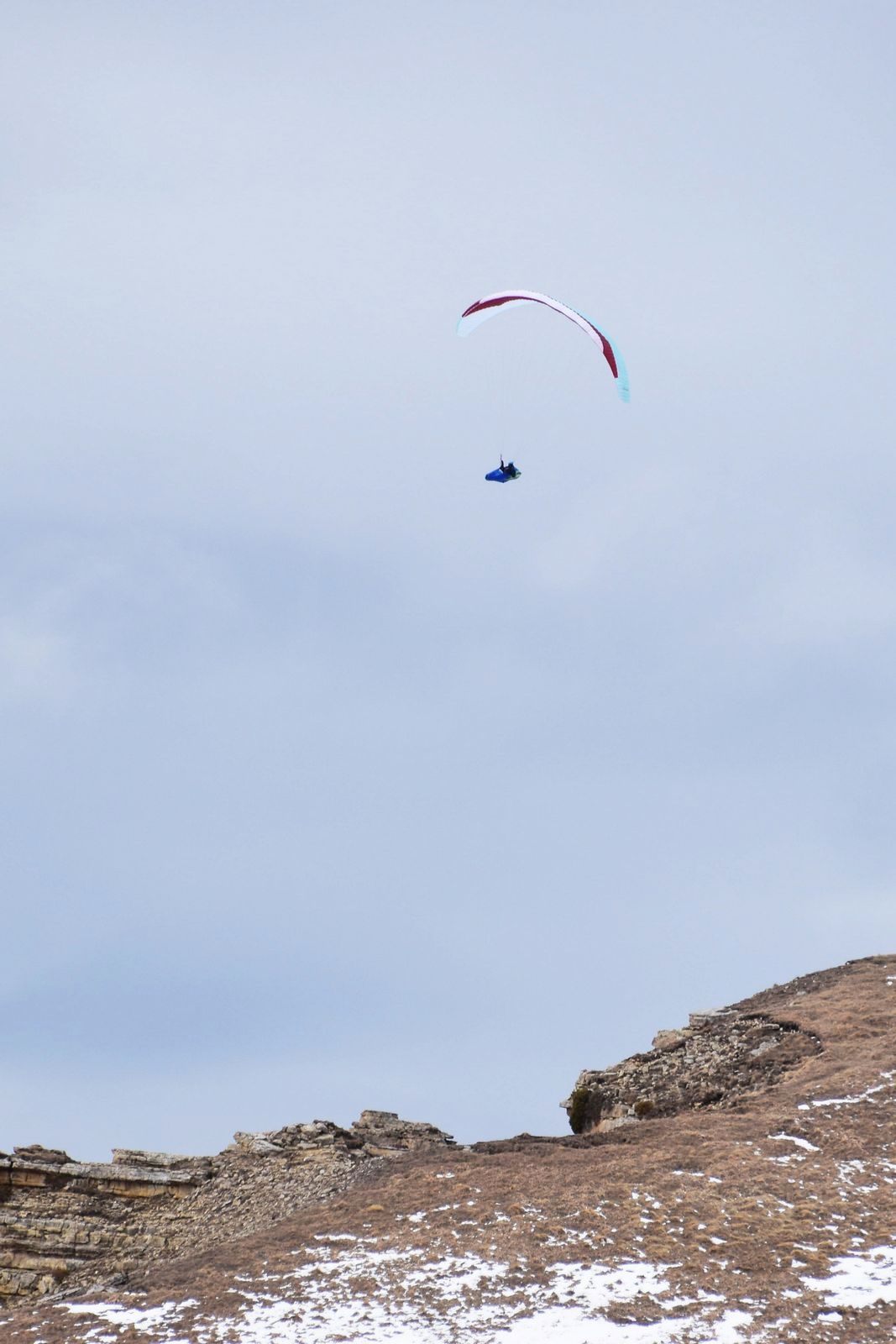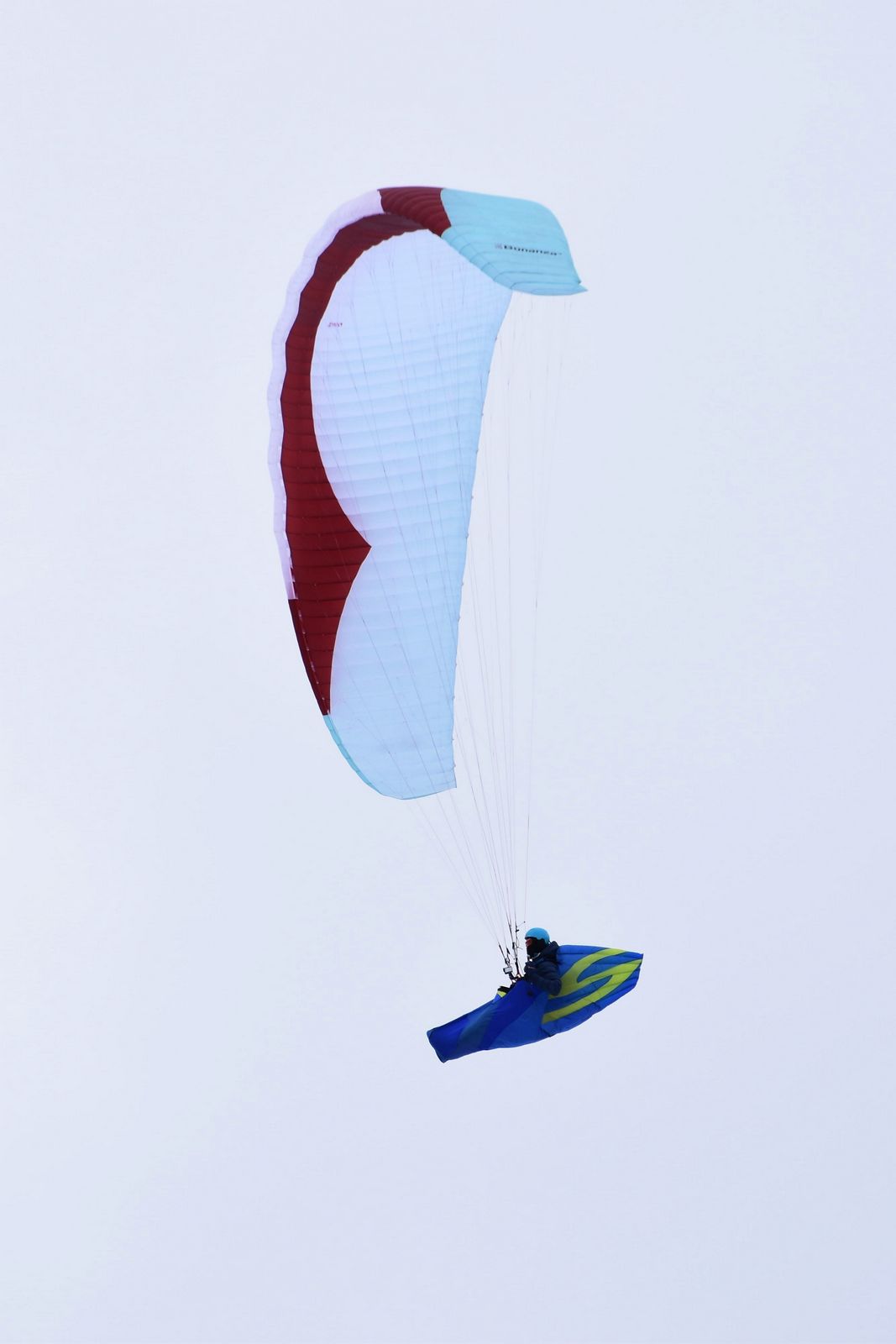The second Bonanza clearly marked the new paradigm of Gin Gliders: a lot of performance, a lot of safety, a lot of comfort. Later, this paradigm was convincingly demonstrated by the very successful Leopard (EN D) and the unexpectedly simple and affordable Boomerang 12 (CCC). Today we have a new protagonist: Bonanza 3, the first EN C-labelled two-liner from the famous brand.
Construction
Canopy

The first thing that catches the eye is the notorious Whale Fin, which has been adopted from the Boomerang 12. Even when deflated, the leading edge has a characteristic sawtooth shape. And if Bonanza is inflated — its upper surface will show rhythmically arranged bulges and troughs. Does it work? Gin's sure it does. So sure, in fact, that Gin Gliders plans to gradually convert their entire range of wings to the Whale Fin! In theory, the Wave Leading Edge gives an increase in glide and improved stall characteristics without compromising safety. But outside the Whale Fin the design of this Bonanza is conservative in a good way. AR is modest, just 6.3. Not a lot of sections, either — 65. No nitinol, just plastic rods. That rods, by the way, are long enough, so it is desirable to pack the Bonanza into a backpack carefully, wrapping the concertina around the harness. The wing fabric is dense (up to 40 g/m2), famously durable Myingjin. It would seem that Bonanza 3 should weigh a lot, but no — even in the maximum size it turned out to be quite adequate 5.5 kg. Not bad for a wing that can last a long time!
Risers
Takeoff and groundhandling

Groundhandling
You could say that the Bonanza 3 is a textbook on how to work with two-liners! It behaves exactly as a low-AR, easy two-liner wing should behave. Yes, in the doldrums you have to pull the A-risers firmly — otherwise the Bonanza simply won't get into a flying position. Yes, it tends to overtake if you overpull. But, come on, it's a two-liner! However, even taking the "two-liner" specifics into account, the Bonanza 3 is unlikely to be difficult for those pilots who are already familiar with wings proudly bearing the EN C label. In general, there are specifics, but nothing too complex. It is a bit more difficult to put Bonanza's "ear" on the ground and pull it back with a "cobra", especially in low winds. Apparently the not-so-small weight of the wing has an effect; after all, plastic rods are noticeably heavier than nitinol. Take note, Mr. Gin! However, this Bonanza can do the Cobra quite well — it just takes a little more effort than you'd expect. But in general this Bonanza behaves obediently and predictably. Nice glider!
Flight

Turn ability
Is this Bonanza's strength or weakness? More like strong! But there are nuances. On the one hand, in comparison with the fastest EN C three-liners like the very successful Artik 6, the Bonanza's turn is, let's say, not ideal. But on the other hand, it's a two-liner! Moreover, it's not an acro-wing or a glider for all sorts of waggas close to the slope. Two-liners (even with EN C label) are instruments designed primarily for XC flying, and control accuracy is much more important than sharp reactions to inputs. And if you look at the Bonanza from this angle, it's very good. It reminds either of the old Icepeak 6 or the more modern Sigma 10. By the standards of a two-liner, the Bonanza's turns are surprisingly clear and simple. However, those taking on two-liners for the first time in their lives won't be disappointed either. Bonanza's steering reactions are quite calm, but quick and precise. When changing the radius of turn and roll, there are, of course, some transients, but it is not difficult to get accustomed to them. Bonanza's thermal spirals are confident, tenacious, almost not requiring brute force even in relatively brisk weather. The load on the brakes is pleasant, slightly above average, and the acuteness of reactions to the brake inputs is almost unchanged throughout the available range of brake travel. And this range is very large! Moreover — there is a noticeable backlash, which makes you think about either wrapping (which I personally do not like and do not recommend), or lowering the arms relatively low. The reactions to weight shift are so featureless that there is nothing to write about them. Everything is simple, everything is clear. The wing is smooth but powerful, and it's easy to control the wing. The Bonanza 3 seems to have inherited much of its maneuverability from its big brother, the very successful two-row Leopard with the EN D label.
Rear risers control
A few words about the control of the rear risers, for the sake of which many dare to change three rows for two. It's perfect! The load on the rear risers of Bonanza 3 is not small, but not so much as to be uncomfortable. But their efficiency is not insignificant either. And if you want less load and more efficiency, you've got to push the gas pedal! The load on the rears in this case expectedly falls, and efficiency of management grows. The handles themselves are pleasant enough, comfortable, cylindrical in shape.
Comfort and feedback
And there it is — the special two-liner magic! It's not as much as the longer "two-liner" ones, but it's there nonetheless. On the far periphery of the lift, the Bonanza has a pronounced "suck" to the core, you can just let the wing go where it wants to go — and it's very likely to find a lift. Entering a thermal creates load waves that mover over the Bonanza both along the span and along the chord (because there are few lines attachment points). Curiously, I have never been able to figure out whether the core throws the Bonanza out of itself or not. Behavior close to neutral. It is more informative than the three-liners, the loads on the brakes and risers change — but even in moderately strong weather the information does not become too much, i.e. comfort does not suffer. This Bonanza two-liner has an unexpectedly large amount of it, no less than the three-liner C-rated gliders. And that's one of the reasons — quite a big one! — for which the Bonanza 3 can be confidently recommended as the first two-liner, and in some cases, even as the first C glider. However, we should keep in mind that sometimes Bonanza 3 can still make some unexpected and rather sharp movements, but the amplitude of such movements is small, and they usually do not require compensation.
Soaring and sink rate
Definitely Bonanza's strong suit. In my opinion, it is stronger than maneuverability. Despite the small AR, the Bonanza 3 "pops up" convincingly in weak conditions and clings to complex, hard to center flows. In stronger weather, the friendly nature of the wing helps a lot — the Bonanza can center lifts confidently and even brazenly, without being too distracted by chatter. I really liked it!
Glide
It is difficult to give a rating, because Bonanza 3 is the first EN C labeled two-liner I have tested. According to other pilots' feedback, the Bonanza 3 is not a leader, but not an outsider in its class. But after the three-liner gliders it is certainly impressive!
Accelerated flight
Well, not a disappointment — but the top speed of the Bonanza 3 is clearly not the best in class. I still don't have a Prandtl-Pitot sensor, so I can only give very rough estimates: something like +12... +15 km/h increase in speed at full throttle. Actually, this is the main — and, it seems, the only! — a reason to be cautious about the Bonanza. But everything has its price, and the relatively low top speed is the price that Gin decided to pay for excellent passive safety, pleasant maneuverability and malleable character. It's not a great price to pay.
Dynamics and energy retention
It's classic! A sense of calm, well-controlled power, much like a Gin Leopard. You want a wingover, you get a wingover. Maybe not with the first move of the body and the brakes, but with the second. The main thing is not to hurry, to catch the rhythm of Bonanza's movements, and if this is done, everything is simple, clear and under the pilot's control. The same is true with steep spirals, and in general with any maneuvers associated with the accumulation and release of energy. It is not an acro wing, but if you know how to pilot it, you'll be in for a treat!
Gin Gliders is almost the last strong player in the paragliding market, who decided to enter the new niche of two-liners with EN C label. And Gin's approach turned out to be very interesting. Unlike his competitors, who made the main bet on the elevated performance, Mr. Gin decided not to scare his potential buyers and created a surprisingly simple and friendly wing. However, this is the philosophy of modern Gin. Forget about top performance at any price, long live reasonable compromises! In the case of the Bonanza 3, the compromise turned out to be not only reasonable, but also very pleasant. The only thing the Bonanza 3 loses noticeably to its rivals is top speed. Otherwise, it is a surprisingly pleasant and understandable wing, created not for super-ambitious sportsmen, but for ordinary mortals who just want a little more perfos and the famous rear risers control and feedback which only two-liners can provide. Bonanza has it all. It also has very nice handling — said to be best in class — and an unexpectedly durable design.
Who would be best suited for a wing like this? A lot of people, starting from the talented pilots buying their first ever EN C labeled wing. Yes, yes, the Bonanza 3 can be used as a first EN C glider, but under condition that you have already flown 150-200 hours in various conditions. Bonanza 3 will be also a good choice for pilots already having experience in flying EN C class wings, allowing them to enter the two-liner reality quite comfortably and safely. Finally, it is a very, very good downgrade for those who are too tired of flying hot-ship two-liners, but still want a two-liner. I don't think this Bonanza is better to fly in the flatlands or in mountains, it's a good all-round wing! However, there is a lighter version of the third Bonanza created for mountain pilots: the Camino 2.
What kind of flying experience is needed to switch to the Bonanza 3, and to the two-liners in general? I think this is a "how many books do you have to read to be smart" question. The reasonable minimum has already been given above — at least 150, preferably 200 hours of flight in various places and conditions. It should be realized that despite all its understandability and friendliness Bonanza 3 is still a two-liner, which is more demanding to steering speed and precision than three-line wings. The Bonanza won't let you totally relax at all. But if the pilot flies with confidence and at a good pace, Bonanza will give lots of positive emotions.
Pros
- Low sink rate, good floatability
- Simple, clear behavior
- Pleasant turn
Cons
- Moderate maximum speed
Thanks
I would like to thank GIN Gliders dealer in Russia Anatoly Lomovtsev ( gingliders.ru ) for providing paragliders for tests.
Copyright
- Foto: I. Tarasova, A.Tarasov
Model
| Year | 2023 |
| Brand | Gin Gliders |
| Homologation | EN C |
| Positioning | EN C 2-liner |
Conditions
| Flying sites | Yutsa, Gumbashi |
| Harnesses | Sky Country SeCtor Race, Gin Gliders Genie X-Lite |
| Total in-flight weight | 100-105 kg |
Technical data
| Flat area, sq. m. | 24,88 |
| Flat A.R. | 6,3 |
| Flat span, m | 12,52 |
| Projected area, sq. m. | 21,11 |
| Projected A.R. | 4,81 |
| Projected span, m | 10,08 |
| Cells, total | 65 |
| Lines scheme | A2A'1B3 |
| Takeoff weight, kg | 95-110 |
| Glider weight, kg | 5,15 |
| Size | M |
Materials and components
| Upper surface, leading edge | Myungjin | MJ40 MF |
| Upper surface except leading edge | Myungjin | MJ32 MF |
| Bottom surface | Porcher | Skytex 27 g/m² |
| Lines, upper cascades | Edelrid | 8001U |
| Lines, middle cascades | Edelrid | 8001U |
| Lines, main (lower) cascades | Edelrid | 8001U |

